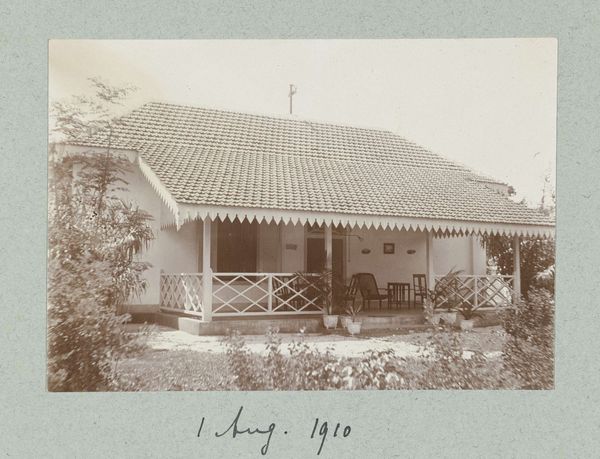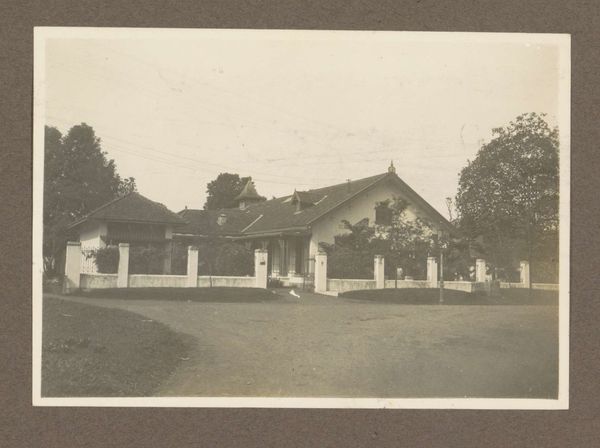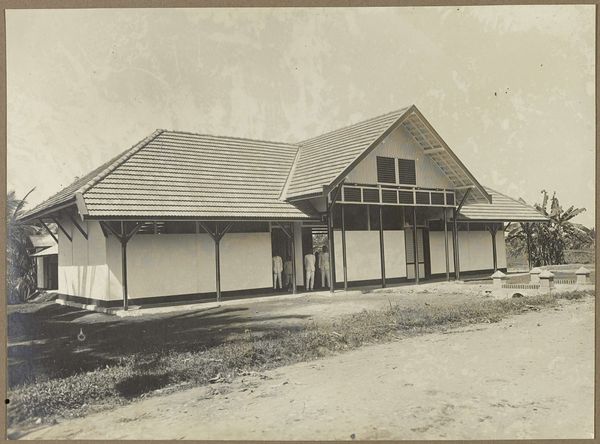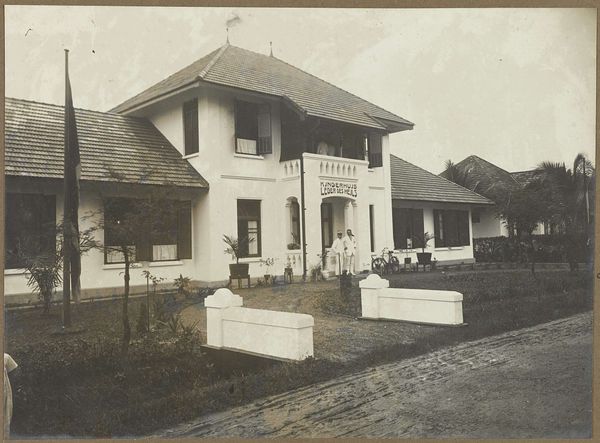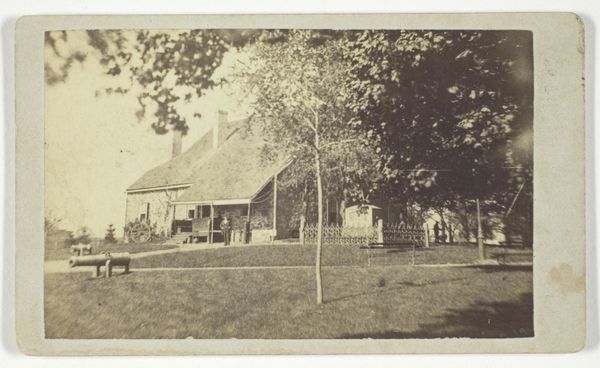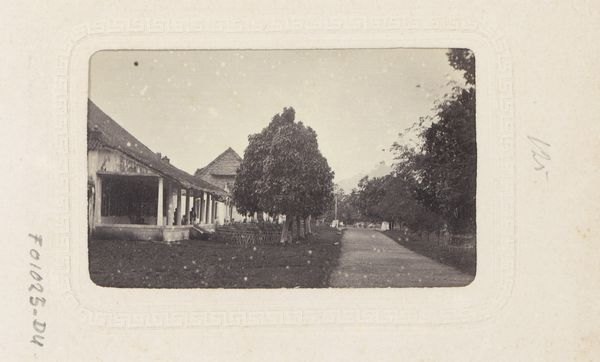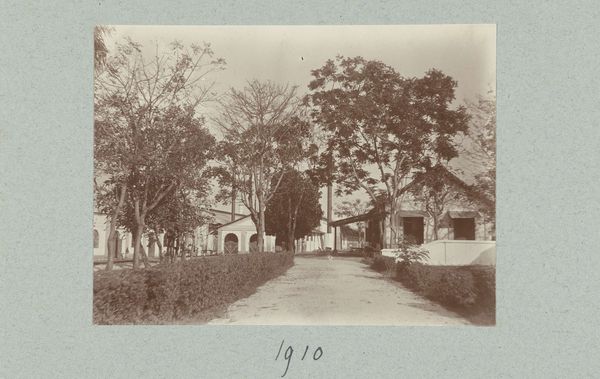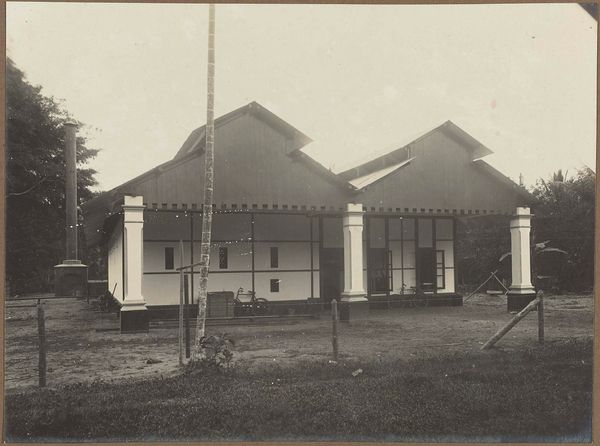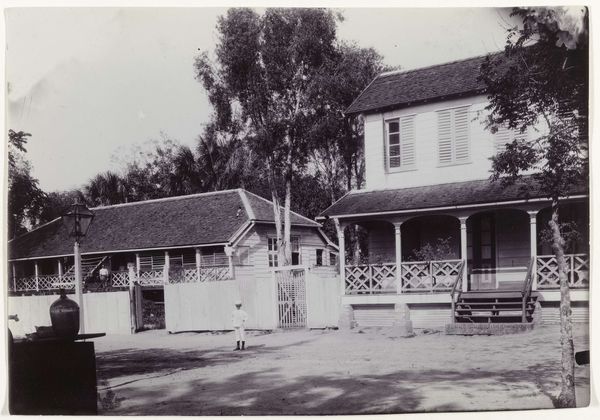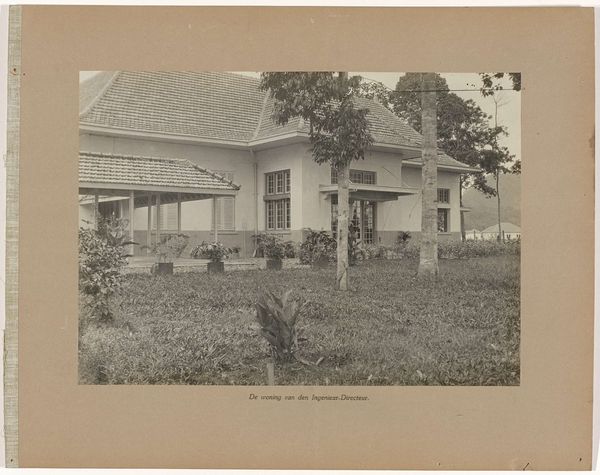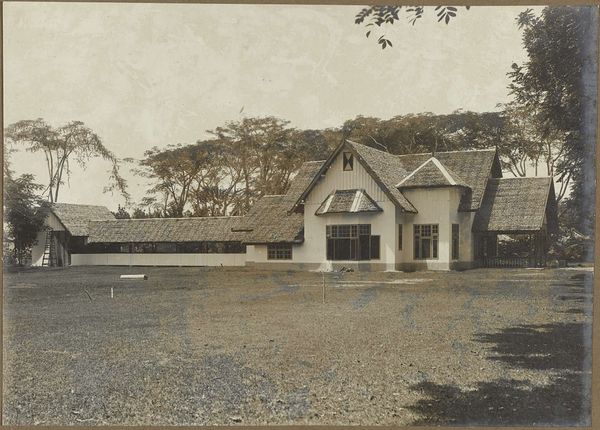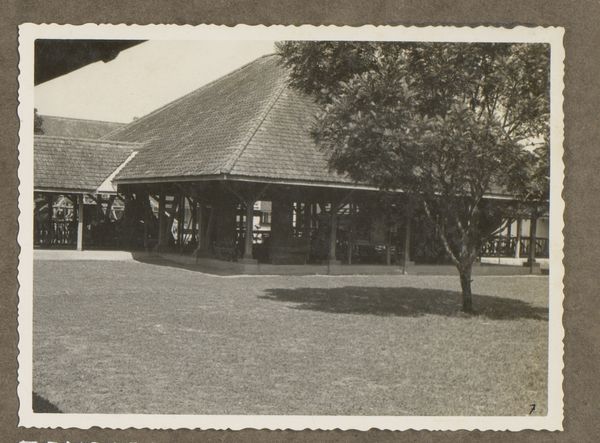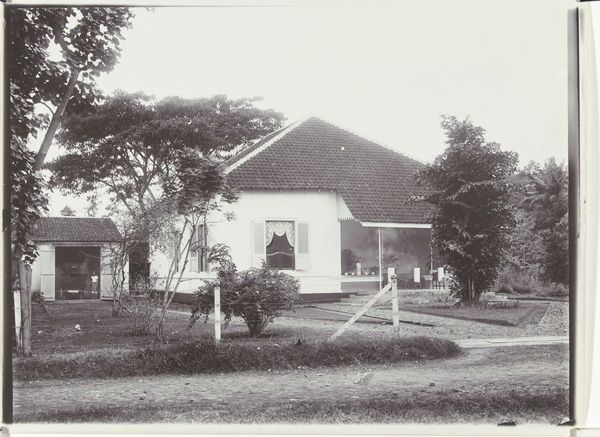
De binnentuin bij een aantal woningen met op de veranda een personeelslid met een dienblad in de hand c. 1903
0:00
0:00
print, photography
# print
#
landscape
#
archive photography
#
photography
#
orientalism
Dimensions: height 79 mm, width 109 mm, height 242 mm, width 333 mm
Copyright: Rijks Museum: Open Domain
Editor: This photograph by Frits Freerks Fontein Fz, circa 1903, titled "De binnentuin bij een aantal woningen met op de veranda een personeelslid met een dienblad in de hand," presents an intimate look at a courtyard scene. It strikes me as quite serene and formal, but also imbued with a sense of unseen narrative. How do you interpret this work? Curator: This photograph speaks volumes through its visual symbols and the narrative it implies. It evokes a sense of colonial life in, I presume, the Dutch East Indies. The architecture, the figure with the tray – they all act as signifiers of a specific power dynamic and cultural exchange. What emotions does the presence of the single figure evoke in you, and what could the tray symbolize? Editor: I think there’s a feeling of stillness and perhaps a subtle air of service or deference associated with the figure and the tray. Maybe an imbalance, or expectation? It makes me curious about what is unseen. Curator: Exactly! The "unseen" is often the most potent symbol. What might be behind the walls or inside the building, and what historical weight do such symbols carry? These architectural choices might point to ideas of division, hierarchy and the staged distance between the colonizer and the colonized. How does that cultural memory resonate, knowing the history? Editor: Thinking about it that way definitely shifts the perspective, giving a richer understanding. The architecture becomes more than just structure; it represents power. Curator: Precisely. The visual vocabulary of colonialism is deliberately encoded within such images. Appreciating these photographic images involves peeling back the layers to understand what continuities exist in the symbols of a shared, if difficult, history. Editor: I see it now; I won't look at old photos quite the same way. Curator: And I hope you find that sensitivity opens a new window on the art.
Comments
No comments
Be the first to comment and join the conversation on the ultimate creative platform.
